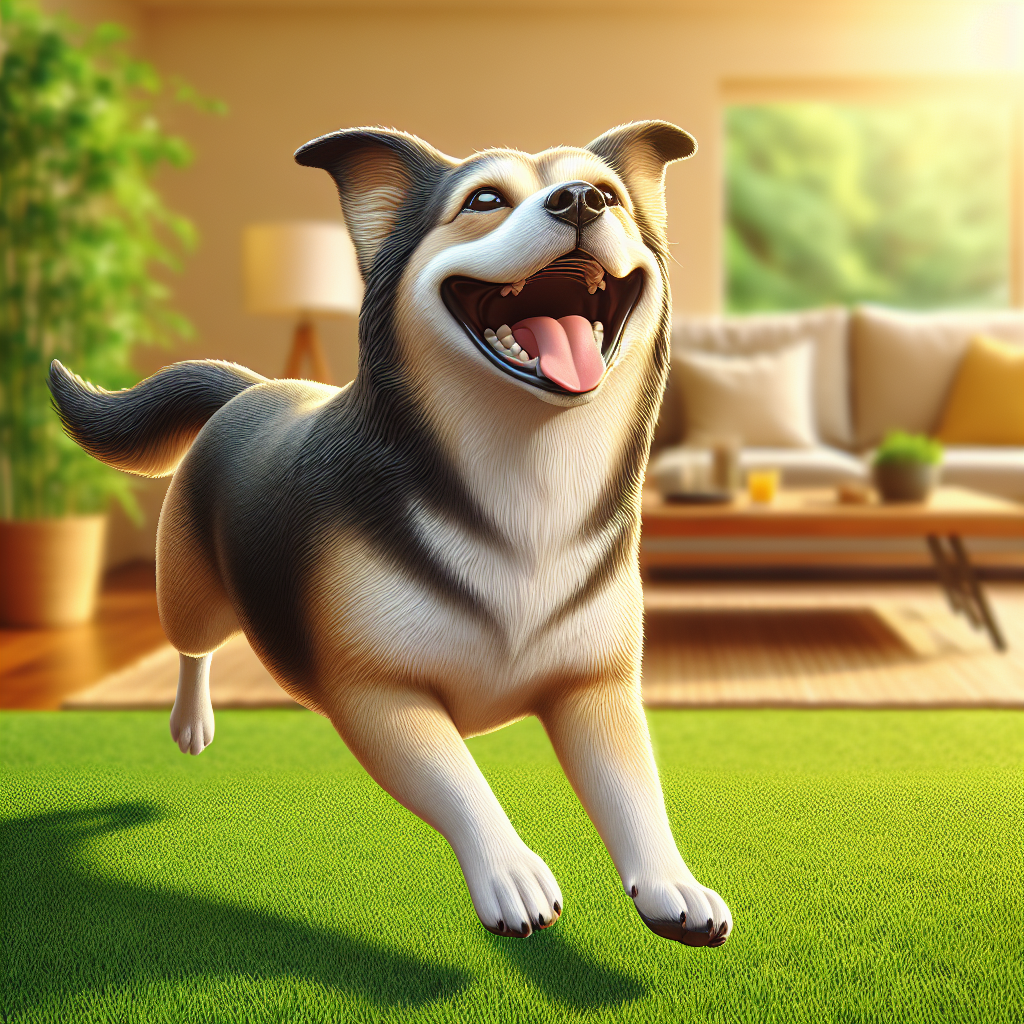Introduction: The Flea Dilemma

Ah, fleas. Those tiny, jumpy nuisances. If you’ve ever had a dog or a cat—or, heck, even a rabbit—you know the struggle. One day, everything’s fine, and the next, you’re scratching your head, wondering how to get rid of fleas in your house quickly. It’s like they’ve got a secret tunnel network to every cozy spot in your home. I remember the first time I dealt with this nightmare. It was a summer evening, and all I wanted was a quiet night. But no, there I was, itching like I was in a bad horror movie.
Now, fleas aren’t just vexing—they’re determined. And fast. You spot one, and bam, it’s like they’ve called in reinforcements. It feels like they’re laughing at your attempts to reclaim your home. But hang in there. It’s not just about treating your pets; it’s about waging a full-on war in your living space. And the first step? Understanding these little devils and their way of life.
Understanding Flea Life Cycle
Fleas aren’t born as the jumpy critters we despise. No, they go through stages—a life cycle, if you will. You see, these guys start as eggs. They’re tiny, sneaky, and love to hide in places you’d never think to look. Picture your pet’s favorite napping spot. Yep, that’s flea real estate right there.
Next, they morph into larvae. These aren’t like the caterpillars you see in kids’ books. Nah, these larvae are elusive little things. They squirm around in the dark, avoiding light like the plague. Then, they turn into pupae. Think of them as the teenage phase—awkward and waiting to transform into adults.
And then, the final act: adult fleas. The pesky jumpers we all know too well. If you want to get rid of fleas in your house quickly, it’s crucial to target every stage of their life cycle. Miss one, and it’s like a never-ending loop. Fun times, right? But knowing is half the battle. Once you’ve got a handle on their life cycle, you’re on your way to kicking them out for good.
Spotting Fleas: Signs and Symptoms
Now, you’re probably wondering how to spot these freeloaders before they take over. Identifying flea infestation signs early can save you a lot of hassle. One day, you’re minding your own business, and the next, you notice your dog scratching like it’s got ants in its pants. That’s your first red flag.
Check your pet’s fur. Do you see tiny black specks? Those are flea dirt. And if you see fleas hopping around, well, that’s a sign you’ve got company. But it’s not just about your pets. Keep an eye out for signs of fleas in your home. You might notice itchy ankles or see them zooming around your carpet or couch. It’s like they’re throwing a party, and you weren’t even invited.
Don’t forget to check for bites on yourself. Small red dots, usually around your ankles, are a tell-tale sign. And if you see your pets acting like they’re auditioning for a scratching competition, it’s time to act. The sooner you spot them, the quicker you can reclaim your space.
Initial Steps: Cleaning and Vacuuming
Alright, you’ve spotted the enemy. Now what? It’s time to roll up your sleeves and get to work. First things first—cleaning and vacuuming are your new best friends. Start with vacuuming for flea control. Hit every corner, every nook, and every cranny. Remember, fleas love to hide in the shadows. So, make sure your vacuum gets into those hard-to-reach places.
Focus on areas where your pets hang out. Their beds, favorite chairs, or that sunny spot by the window. After vacuuming, empty the bag or canister outside. You don’t want those little buggers making a comeback.
Don’t stop there. Wash your pet’s bedding, blankets, and any fabric they lounge on. Use hot water to kill the fleas and their eggs. It’s tedious, sure, but think of it as a necessary evil. The more thorough you are, the better your chances of getting rid of fleas in your house quickly.
And hey, while you’re at it, sprinkle some baking soda or salt on your carpet before vacuuming. It might just give you that extra edge in the battle. Sometimes the simplest tricks are the most effective.
Treating Your Pets: Frontline Defense
Now, let’s talk about the frontline of this war—your pets. They’re the reason these little pests found their way into your home in the first place. So, treating your pets is crucial. Effective pet flea treatments are out there, and they can make a world of difference.
You’ve got options. There are topical treatments, oral medications, and even collars. Chat with your vet to find what works best for your furry friend. But remember, consistency is key. Missing a dose could mean you’re back to square one.
And if you’re into natural flea remedies, there are options too. Some folks swear by apple cider vinegar or essential oils. But again, check with your vet. You don’t want to go down the natural path and end up doing more harm than good.
Once your pet is treated, don’t let your guard down. Keep an eye on them, and stay vigilant. It’s a team effort—your furry pals count on you to keep them flea-free. And while it might seem like an uphill battle, remember, you’re not alone. We’ve all been there, swatting away fleas like it’s a full-time job.
So, there you have it. A glimpse into the madness that is dealing with fleas. It’s not pretty, but with a little grit and determination, you can reclaim your home. Thanks for sticking around and good luck—may your home be flea-free soon.
Vacuuming: Your Best Friend in the Battle
Ah, the humble vacuum cleaner—your best buddy when you’re knee-deep in the war against fleas. It’s not just about cleaning up crumbs from last night’s popcorn binge. Nope, this is serious stuff. We’re talking about a battle plan, and the vacuum is your first line of defense. You might be wondering, “What’s the best vacuum for fleas?” That’s like asking which cowboy has the best lasso—it’s gotta be one with strong suction and a handy HEPA filter. These bad boys don’t need to be fancy or break the bank, but they do need to suck up those pesky fleas like there’s no tomorrow.
The secret to a flea-free home starts with vacuuming regularly. And I mean regularly, like brushing your teeth or watering that one plant you haven’t killed yet. You gotta get in the nooks and crannies—under the couch where dust bunnies roam and between those cushions that swallow remotes whole. Fleas love those dark corners, almost as much as your cat loves ignoring you. So, put on some tunes, grab your vacuum, and let it work its magic.
Flea Traps: A Sticky Situation
Now, onto flea traps—they’re sticky situations in the best way possible. You don’t need to buy those fancy ones from the pet store that promise the moon and stars. No, sir. Homemade flea traps for the house are where it’s at. Picture this: A shallow dish filled with a bit of soapy water and a light source. It’s not rocket science; it’s more like a science fair project gone right.
Fleas, those little jumpers, are drawn to the light like moths to a flame. They hop in, and boom—trapped. It’s a sight to behold, and oddly satisfying. Place these traps strategically around your home, like near the pet’s bed or by the door where fleas might sneak in. Trust me, you’ll start to see results. It’s like watching a tiny, flea-themed horror movie unfold in your living room.
Natural Remedies: Mother Nature’s Arsenal
Mother Nature—she’s got a few tricks up her sleeve. When you’re tired of playing mad scientist with flea traps, it’s time to dig into natural flea remedies for the home. You don’t need a degree in herbal medicine to get this right. Start with diatomaceous earth—a fancy name for crushed-up fossils. Sprinkle this magic dust around, and it dehydrates the fleas, turning them into flea jerky.
Then there’s the classic vinegar solution. A bit of vinegar in the wash or in a spray bottle can help deter fleas. They can’t stand the stuff. It’s like garlic to a vampire. But remember, natural remedies are great, yet sometimes they need a little help from their chemical cousins. Don’t worry, we’ll get to that. For now, enjoy the earthy smell of victory as you sprinkle and spray your way to a flea-free zone.
Chemical Solutions: When Nature Needs a Boost
Alright, sometimes Mother Nature needs a little boost, and that’s where chemical flea treatments for the home come into play. It’s not giving up; it’s just calling in reinforcements. We’re talking about effective flea control products that pack a punch. These aren’t your grandma’s flea powders; they’re high-tech solutions designed to tackle infestations head-on.
You don’t need a hazmat suit, but you do need to follow the instructions. Get the right product for your home’s needs, whether it’s a spray, fogger, or powder. Timing is everything—like catching a bus or baking cookies. Apply these treatments when pets and kids are out of the house, and let them work their magic. It might not be as poetic as natural remedies, but sometimes you need a bit of science to save the day.
Keep the Fleas Gone: Maintenance Tips
Congratulations, you’ve fought the good fight. But don’t rest on your laurels just yet. Keeping a flea-free home is like maintaining a car—it requires regular check-ins and maybe a few oil changes. Here’s how to maintain a flea-free home and keep those buggers from returning.
Start with flea prevention tips indoors. Keep your pets treated and bathed, ’cause they’re the main attraction for fleas. Vacuum like it’s going out of style, and wash pet bedding often. It’s like doing laundry for your furry friends. Keep an eye out for signs of fleas returning, and act fast if you spot any. Remember, it’s easier to squash a rebellion before it starts.
It’s been a wild ride, hasn’t it? From vacuuming like a maniac to setting up flea traps, you’ve done it all. Thanks for sticking around and reading my rambling thoughts. Here’s to a flea-free home and more peaceful days ahead. You’ve got this—go out there and show those fleas who’s boss.
Prevention is Your Best Buddy
Alright, folks, let’s get down to brass tacks. If you want to know how to get rid of fleas in the house quickly, you’ve gotta start with prevention. It’s like putting on a raincoat before the storm hits. We’re talking flea prevention tips that save you a whole heap of trouble down the road. Imagine the little buggers not even getting a foot in the door. It’s not about being fancy; it’s about being smart and one step ahead.
First thing’s first—keep your pets protected. Flea collars, monthly treatments, whatever floats your boat. Just make sure you’re doing something. This is the lock on the door, folks. And hey, don’t forget about the good old-fashioned routine bath. Your pets might not thank you, but your flea situation will be miles better.
And then there’s the home. Cleanliness is key. It’s not rocket science. Regular washing of pet bedding and vacuuming the house like you’re some kind of cleaning ninja. Fleas don’t stand a chance in a tidy, well-kept home. Trust me on this one.
Natural Flea Busters: Kitchen Edition
Now, let’s talk about those natural flea remedies. You’d be amazed at the stuff you can find in your kitchen that doubles as DIY flea solutions. Vinegar, lemons, even salt—who knew? It’s like turning your home into a flea-busting fortress with the simplest tools. And the best part? You’re not emptying your wallet on expensive treatments.
Let’s start with vinegar. This stuff is a miracle worker. Mix it with a bit of water and you’ve got yourself a flea repellent. A little spray here, a little spritz there, and those fleas are packing their bags. Plus, it’s safe to use around kids and pets. Who wouldn’t love that?
Lemons, on the other hand, are like nature’s flea repellents. Boil a few slices in water, let it cool, and then give your pet a rubdown with the solution. It’s like a spa day for them—minus the fleas. You’re turning an ordinary kitchen into a flea-fighting haven. And all with stuff you probably already have lying around. Who needs fancy chemicals when you’ve got Mother Nature on your side?
The Vacuum Chronicles: Your New Best Friend
Ah, the vacuum. Who would’ve thought that how to vacuum for fleas could be such a game-changer? It’s your trusty sidekick in this epic battle against fleas. Imagine it—a vacuum cleaner and you, partners in crime, taking down those fleas one room at a time. There’s something oddly satisfying about hearing those little pests getting sucked away. It’s like music to your ears.
But here’s the kicker: you’ve got to do it right. It’s not just a quick once-over. No, sir. Get into those nooks and crannies, under the couch, behind the curtains. Leave no stone unturned. Fleas love to hide in those dark places. It’s their version of a vacation spot. And you’re about to evict them.
The key here is consistency. You can’t just vacuum once and call it a day. Make it a habit. Every couple of days, give your home the once-over. It’s therapeutic, really. You’ll end up with a clean house and a flea-free zone. Double win.
Tackle the Yard: The Fleas’ Favorite Playground
Now, let’s not forget the yard. It’s like a theme park for fleas—a place where they frolic and multiply. But you? You’re about to shut it down. Yard flea control methods are your secret weapon.
Start with the basics. Keep the grass short, trim the bushes. Fleas love tall grass and shady spots. By tidying up, you’re taking away their playground. There’s no room for freeloaders in your yard.
And then there are the nematodes. Sounds like something out of a sci-fi movie, right? But these little guys are your allies. They’re tiny worms that eat flea larvae. You sprinkle them around the yard, and they get to work. It’s like nature’s pest control. Easy, effective, and, best of all, natural.
Watering your yard regularly helps too. Fleas hate moisture. So a well-watered yard is the last place they want to be. You’re creating a flea-free zone outdoors, which means fewer chances of them hitching a ride inside.
The Final Sweep: Keeping Fleas at Bay
So you’ve done the hard part. The fleas are gone. But how do you keep it that way? Maintaining a flea-free home is all about long-term flea prevention strategies. You’ve got to stay vigilant.
Regular checks on your pets are a must. It’s a small price to pay for peace of mind. And don’t slack on the cleaning. Keep up with that vacuuming routine. It’s not glamorous, but it works.
And here’s a tip: keep those natural flea remedies in your arsenal. You never know when you might need them again. A little prevention goes a long way.
You’ve done it. Your home is your castle, and you’re the ruler—flea-free and proud. Thanks for sticking it out with me, folks. Now go reclaim your home. You’ve got this.
Quick Takeaways:
Getting rid of fleas in the house quickly is no small task. It requires a mix of savvy, elbow grease, and a bit of patience. Let’s kick things off with the basics—identifying flea infestation signs. Trust me, those little jumpers aren’t shy about making themselves known. If you’re noticing your pets scratching like mad and finding tiny black specks (flea dirt) around, you’ve got company.
Now, about that vacuum—your new best friend. Vacuuming for flea control is the name of the game. You’ll want to hit every corner, every crevice, and don’t forget the furniture. Use a vacuum with good suction and a HEPA filter—the best vacuum for fleas will suck up not just the adults, but also those sneaky eggs and larvae.
Speaking of larvae, understanding flea life cycle stages is key. Knowing what you’re up against helps in picking your weapons wisely—from effective pet flea treatments to natural flea remedies for the home. Ever tried a bowl of soapy water under a nightlight as a homemade flea trap? It’s like setting a flea disco—only they won’t be dancing for long.
Chemical flea treatments for the home might seem like overkill, but sometimes you need them. Remember, the goal is to clear the house and maintain a flea-free home. Prevention doesn’t stop here. Regular checks and treatments are your insurance against another flea fiasco.
FAQs:
1.
How can I get rid of fleas in the house quickly?
First off, vacuum like there’s no tomorrow. Focus on areas where your pets hang out. Wash pet bedding and any soft furnishings. Use effective flea control products, and don’t shy away from chemical flea treatments if needed. Lastly, treat your pets with effective pet flea treatments to stop the cycle.
2.
What are the signs of fleas in home?
Look for flea dirt—those tiny black specks on your pet’s skin or bedding. Pets scratching more than usual is a huge clue. And if you’re feeling itchy yourself, well, that’s a sign you can’t ignore. Fleas tend to hide in carpets, furniture, and even baseboards, so keep an eye out.
3.
Are natural flea remedies effective?
Natural flea remedies can work wonders, especially if you’re into DIY solutions. Things like diatomaceous earth, lemon sprays, or vinegar can deter fleas. But remember, sometimes you need to bring out the big guns for persistent infestations. It’s a balance—natural remedies for maintenance, chemicals for heavy-duty jobs.
4.
What’s the best way to maintain a flea-free home?
Regular vacuuming is your best friend. Keep your yard tidy since it’s a flea’s playground. Use flea prevention tips indoors like treating carpets and furniture with natural or chemical products. And don’t forget your pets—ensure they’re on a year-round flea treatment plan.
5.
How does understanding flea life cycle stages help in getting rid of fleas?
Knowing the flea life cycle helps in targeting them at every stage. Eggs, larvae, pupae, and adults—each stage needs a different approach. Vacuuming helps with eggs and larvae, while treatments target adults. Timing your efforts to break the cycle ensures you’re not just treating symptoms but eradicating the problem.
Conclusion:
Getting rid of fleas in the house quickly might feel like a Herculean task, but with the right approach, it’s absolutely doable. You’re armed with the knowledge of flea life cycle stages, a trusty vacuum, and a slew of treatments—both natural and chemical. Now, it’s all about execution. Stay vigilant with regular checks and treatments, and don’t underestimate the power of a good vacuuming routine. It’s a dance, a delicate balance of attack and prevention, but one that ends with you reclaiming your home from those pesky invaders. So, gear up and get going! Thanks for sticking around, and may your home soon be the flea-free haven you deserve.
References:
1. [Healthline – How to Get Rid of Fleas](https://www.healthline.com/health/healthy-home-guide/how-to-get-rid-of-fleas)
2. [Frontline – How to Get Rid of Fleas in the House – Fast!](https://uk.frontline.com/pet-advice/seen-multiple-fleas-house)
3. [Rentokil – 3 Home Remedies to Get Rid of Fleas](https://www.rentokil.com/id/en/services/pest-control-services/my-pest-control-quick-tips/3-home-remedies-to-get-rid-of-fleas)
4. [WikiHow – Get Rid of Fleas in the House Fast](https://www.wikihow.com/Get-Rid-of-Fleas-in-the-House-Fast)
Our solution eradicates fleas on contact without harmful chemicals, ensuring a safe environment for your pets and family. Easy to use and highly effective, SayByeBugs helps you maintain a flea-free home. Learn more and order today at SayByeBugs.com
Our solution eradicates fleas on contact without harmful chemicals, ensuring a safe environment for your pets and family. Easy to use and highly effective, SayByeBugs helps you maintain a flea-free home. Learn more and order today at SayByeBugs.com








